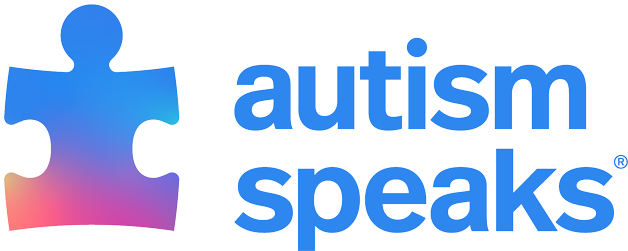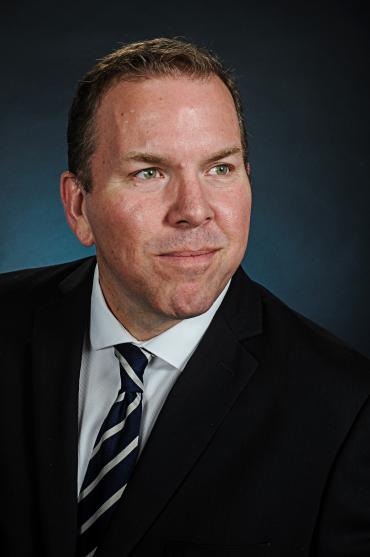Autistic teacher perspective: How to nurture autistic students and build an inclusive classroom
When the COVID-19 pandemic disrupted their forensics investigation business in 2020, Jim Hoerricks decided it was time for a career pivot. With a PhD in Higher Education Leadership and two master’s degrees, they eyed a return to the classroom. Not as a student, though. This time they wanted to teach in their high-needs area of California. So they applied and were accepted to Teach for America, the non-profit that selectively recruits recent college graduates and midcareer professionals to teach. They are now in their third year as a special education resource teacher at a high school in Los Angeles, working with a co-teacher in general education math and English classrooms, where most of their students are English-Language Learners.
In addition to their career path, Hoerricks brings something else unique to their new profession: their lived experience as an autistic person.
“I’m open with my colleagues and students about who I am and the problems I face each day,” said Hoerricks. “I think that authenticity helps me to connect – something that we autistics are often accused of not being able to do. Ironic, isn’t it.”
Jim shares their perspective to help other teachers connect with students with autism and related disabilities to maximizes their learning:
Incorporate Universal Design for Learning concepts
Hoerricks is a big proponent of Universal Design for Learning – an approach that seeks to design the curriculum and learning environment in a way that accommodates the needs and abilities of all learners, describing it as “utterly welcoming and inclusive.”
One concept they suggest teachers and professors consider is the flipped classroom. In this model, rather than receiving information through lectures and direct instruction and then completing assignments at home, the sequence is reversed. Students first encounter the information before coming to class, using video lectures or supportive reading materials. Then, class time is used to engage with the information through interaction and collaboration, allowing students to make meaning of what they have learned.
Hoerricks likes this kind of instruction because instructional materials can be adapted to suit all learning needs. For example, a video can include closed captioning, and text can be adapted for screen-readers, colored overlays or with visual supports.
“By accessing the content before class, students can review the material at their own pace and on their own schedule, as many times as necessary, and take notes or jot down questions in their preferred style,” they added. “This pre-class engagement prepares everyone for in-depth discussions and activities during face-to-face class time.”
Leverage student interests
Hoerricks serves students with a range of support needs, including those with limited functional language and intellectual disabilities. Working within general education classrooms, they provide small-group support to students who benefit from direct instruction, including those whose IEPs specify this accommodation as well as those without IEPs who choose to join. They consider the classroom a community of learners, and they value the expertise students often bring with them about their passions and interests.
“As an educator, I’ve leaned heavily into leveraging student voice and knowledge. I’m there to provide structures and supports that will assist each in becoming the best version of themselves, as they define it,” they said.
For example, when teaching literacy and building reading stamina, they allow students to select high-interest books at the upper end of their current reading level. This way, students can work toward reaching standards in a way that keeps them interested while also increasing their expertise in their favorite subjects.
Encourage students to learn how their brains work
Hoerricks describes themself as a gestalt language processor – that is, like many autistic people, they learn language in chunks or phrases rather than single-word units. Since reading and spelling instruction is typically geared to analytic language learners, they did not become fully literate until after high school. Without an understanding of how their brain worked, they could not ask for the support they needed. So now Hoerricks emphasizes the importance of students gaining insight and understanding into their own learning styles in order to excel.
Promote self-advocacy and self-care
Like many autistic people, Hoerricks uses stimming to self-regulate. However, they know that many common stimming behaviors, like pacing, humming, and jumping, would be disruptive to others in the classroom environment. So they practice and share what they call, “covert stims.”
“When the system disfavors our stimming activity, we still have to find a way to regulate,” Hoerricks said. “The covert stim concept is a private accommodation, if you will - a way of saying that I’m going to get my needs met in spite of the system - which is the height of self-advocacy.”
For tactile needs, they suggest students carry a small fabric swatch or smooth stone in a pocket that can be rubbed discretely. For those who rather not keep track of an object, they suggest engaging in subtle hand or finger movements like tapping fingers together, or squeezing and then releasing their hands. For visual stimming, they suggest a small, handheld tool like a liquid motion timer, a glitter jar or an interesting keychain that can be used quietly and without drawing attention. They also recommend practicing deep breathing techniques to provide sensory input and promote relaxation.
Build a classroom culture
In many classrooms, there are expectations around behavior that can create problems with sensory regulation for autistic students.
“Can students influence lighting, sound, smell, seating? Can they get up and move around when they need to? Are headphones welcome?” asked Hoerricks. “What about that student who doodles and never makes eye contact with the professor but hears everything and uses the doodles to self-regulate?”
Instead of dictating parameters around these kinds of behaviors on the first day as a set of rules, Hoerricks suggests a discussion in which the class collectively sets the norms for their community.
Recognize teacher training regarding autism is limited and seek out lived experiences of autistic people
Despite 1 in 36 children being diagnosed with autism in the United States, many general education teachers lack sufficient training specific to students on the autism spectrum. In many teacher-education programs, pre-service teachers get just one class dedicated to autism, and it is rarely a mandatory topic in ongoing professional development requirements.
As part of their own training experience, Hoerricks realized that much of what teachers do learn about supporting autistic students is not informed by the lived experience of autistic people.
“Imagine having your life explained to you by someone who knows nothing about you but is operating under the unshakeable belief that they know everything about you and people like you,” they said.
To address what they thought was missing in their own teacher prep program Hoerricks wrote a textbook on autism: No Place for Autism?: Exploring the Solitary Forager Hypothesis of Autism in Light of Place Identity. The book explores the question of what autism is, how it is best viewed in society and asks what can be done to give place for autistic people and communities. It also considers issues such as the journey to diagnosis or self-diagnosis, IEP eligibility, and information about accessing disability supports in college.
In addition to teachers, Hoerricks said there is something in his book to benefit the self-advocate, the parent of an autistic child, and the undiagnosed adult, among others. While they hope to continue working to change the way autistic people are supported, beginning with their experiences at school, their book is part of an effort to help all involved navigate the system as it is now.
Additional resources:
Autism in the classroom: How general education teachers can support students with ASD









